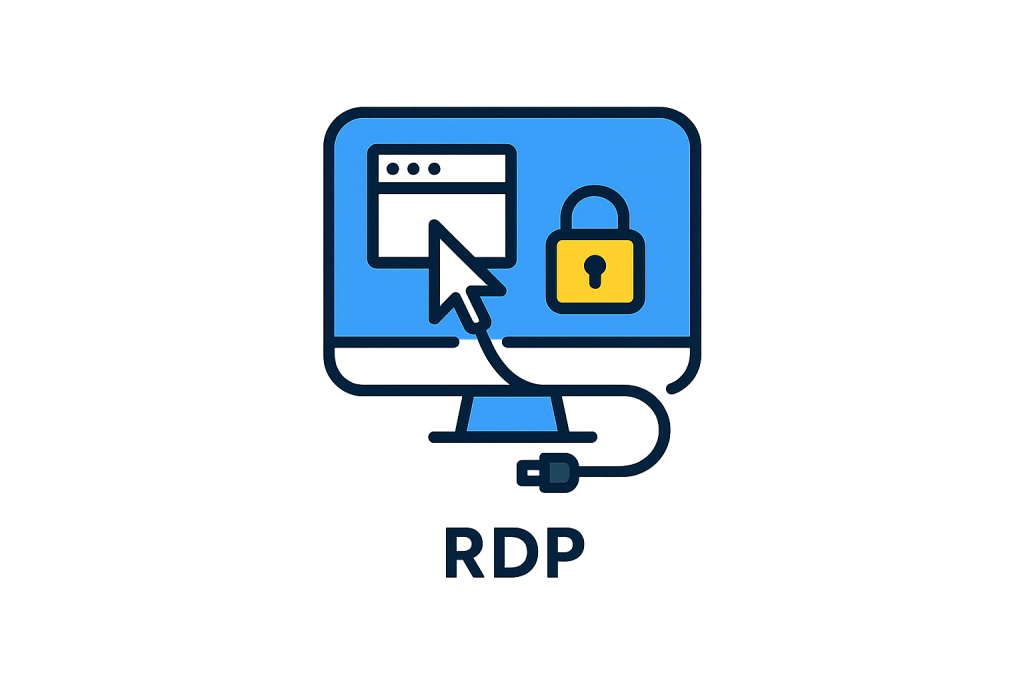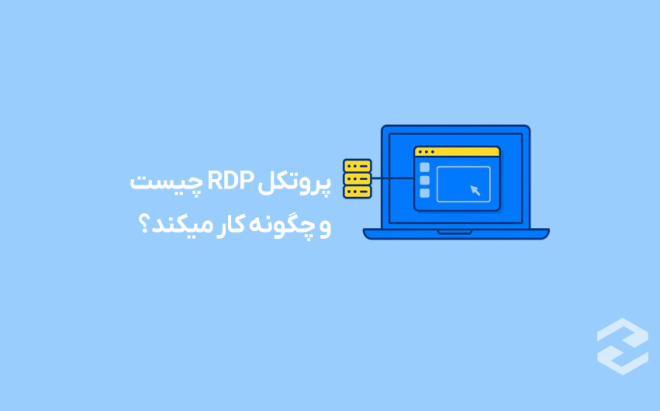Remote Desktop Protocol (RDP) is one of the most widely used methods for remotely connecting to other systems. Developed by Microsoft, this protocol allows users to connect to and control another desktop or server over the internet.
In today’s world, where remote work and cloud server management are very common, familiarity with the RDP protocol is essential for network administrators, enterprise users, and hosting and server service providers.
What is RDP Protocol?

The Remote Desktop Protocol, abbreviated as RDP, is a communication protocol that allows users to remotely connect to a Windows system or server.
Using RDP, the user can control the screen, mouse, and keyboard of the target system as if they were sitting in front of it.
In this type of connection, information is transmitted through an encrypted channel between the user and the target system. For this reason, RDP is considered a secure and reliable option for managing server or desktop systems remotely.
How the RDP Protocol Works

The RDP protocol transfers data bi-directionally between the Client and the Server.
When a user connects to the destination system via RDP, image data (such as the desktop or open windows) is sent from the server to the client, and user inputs (such as mouse movements or key presses) are sent back from the client to the server.
RDP typically uses port 3389 and transmits data packets via TCP and UDP. This communication is designed to provide a good user experience even in situations where internet speeds are low.
Uses of RDP

The RDP protocol is used in many work and organizational environments. Some of its most common uses include:
- Server Management: Network administrators can control and configure Windows servers from anywhere via RDP.
- Remote User Access: Company employees can connect to their work systems from home.
- Remote Support: IT teams can troubleshoot user problems remotely using RDP.
- Access to Cloud Environments: Many hosting companies use RDP to connect to VPS or Dedicated Server.
Benefits of Using RDP

Using the RDP protocol has numerous benefits for businesses and personal users:
- High Security: Data is transmitted in encrypted form to prevent unauthorized access.
- Reduced Costs: There is no need for physical presence to manage systems.
- Easy Access: Users can connect to the target system from any device with different operating systems (Windows, macOS, Linux).
- Support for Multiple Concurrent Sessions: In server versions of Windows, multiple users can log in simultaneously using RDP.
RDP Security Risks and Challenges
While RDP is a powerful and useful tool, it can become a target for cyberattacks if not properly secured.
Hackers often use port 3389 scanning to find systems with open RDP access. If there is a weak password or lack of two-factor authentication, the likelihood of system intrusion increases.
Ways to Increase RDP Security:
- Using strong and complex passwords
- Enabling Multi-Factor Authentication (MFA)
- Changing the default port 3389 to another port
- Using a VPN to restrict access from the public internet
- Disabling RDP when not in use
The Difference Between RDP and Other Remote Access Protocols
The RDP (Remote Desktop Protocol) protocol is not the only option for controlling systems remotely. Alongside it, there are other protocols and tools such as VNC, SSH, and even third-party software like TeamViewer, each with its own specific use.

۱. Performance and Efficiency:
The RDP protocol is optimized for transferring graphical data. This means that instead of sending the actual desktop image, it only sends the changes on the screen; this makes its performance much faster than tools like VNC, even in situations where the internet speed is low.
In contrast, VNC (Virtual Network Computing) sends desktop images in full, which results in higher bandwidth consumption and slower performance.
2. Security:
From a security standpoint, RDP is more secure than many other protocols because it uses data encryption by default. Additionally, it allows enabling features such as Network Level Authentication (NLA) and Multi-Factor Authentication (MFA), which significantly enhance connection security.
In contrast, some other tools like VNC or older software may run without active encryption unless the user manually applies security settings.
SSH (Secure Shell) is also very strong in terms of security, but it is mostly used for text-based and command-line connections, not for graphical environments.
3. Usage Type:
RDP is primarily designed for the Windows operating system and performs best in Microsoft work environments. While RDP client versions are also available for macOS and Linux, the capabilities are more limited on these operating systems.
In contrast, protocols like SSH or VNC are platform-agnostic and are widely used across various operating systems.
The RDP (Remote Desktop Protocol) provides a secure and fast connection, helping network administrators and users to maintain complete control of their systems without the need for physical presence.
However, securing RDP is crucial to prevent unauthorized access and hacker intrusions.
Therefore, if you are using Windows servers or cloud environments, be sure to familiarize yourself with methods to enhance RDP security to ensure the efficiency and security of your systems.
